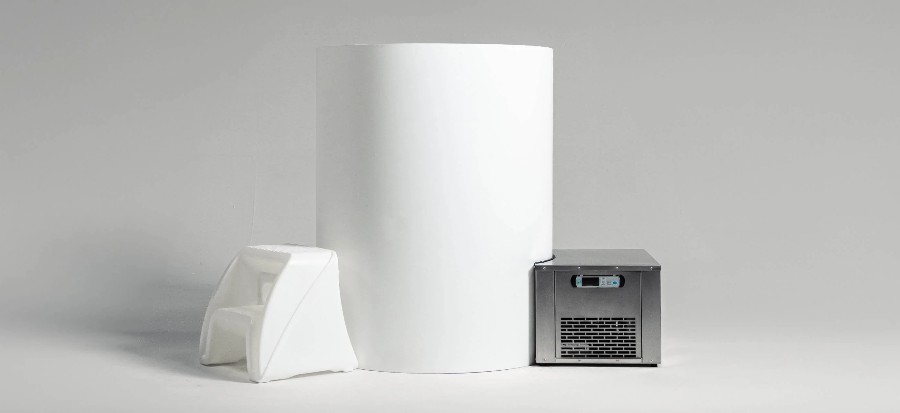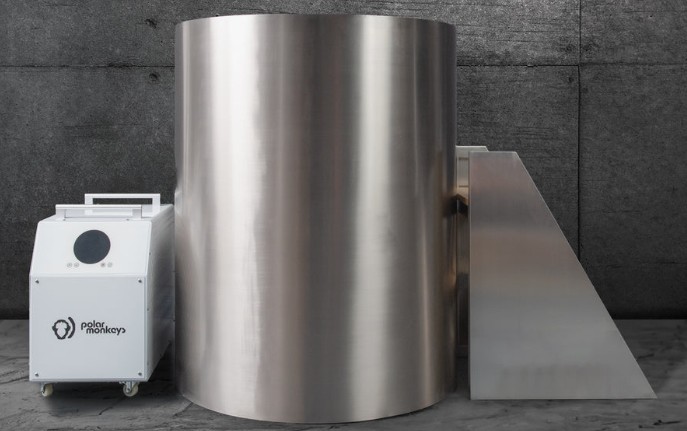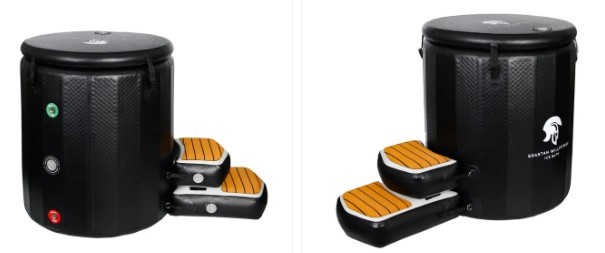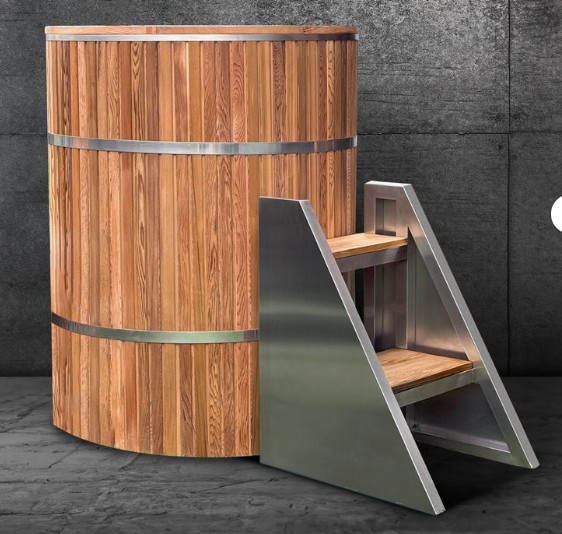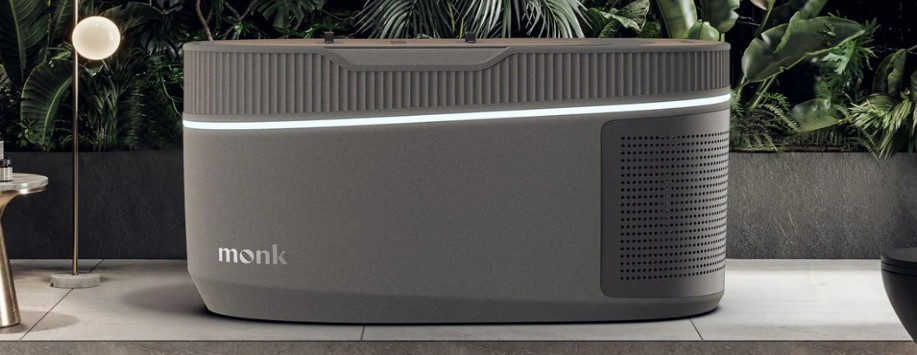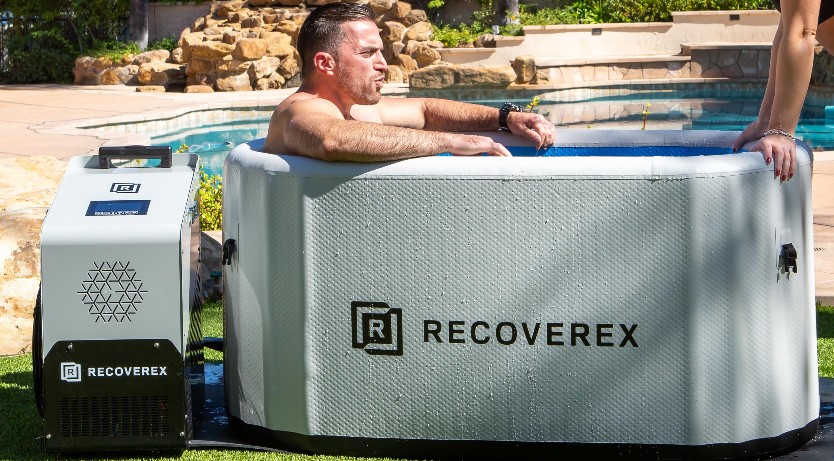Need help?
Unsure whether you need a bath or a plunge, portable or fixed, chiller or iced? Check out Sasha’s cold plunge vs ice bath article to answer all and get clarity on your cold immersion needs.
The first time I guided a student through their inaugural ice bath on the misty Oregon coast, I witnessed that familiar mix of fear and exhilaration in their eyes. As a former yoga instructor turned cold therapy practitioner, I’ve spent countless hours testing and experiencing the very best ice bath tubs – both with beginners and advanced practitioners.
This guide shares my intimate experience with the top ice bath tubs available today, blending technical expertise with the wellness aspect of cold immersion that transformed my own holistic journey.
If you’re in the market for a more budget-friendly and occasional-use tub take a look at Marcus’s Top 7 Portable Ice Baths.
Contents
- 1 TL;DR – Our Best Ice Bath Tubs Picks:
- 2 Why Trust My Recommendations
- 3 Best Overall: The Ultimate Plunge
- 4 Best Smart Tub: Polar Monkeys Cyber Barrel
- 5 Best Budget Option: Ice Barrel 500
- 6 Best for Athletes: Spartan Pro Barrel
- 7 Best Traditional Experience: Polar Monkeys Star Treatment 2.0
- 8 Best Luxury Choice: Monk Smart Ice Bath
- 9 Best Portable Option: RECOVEREX Cold Plunge Tub
- 10 Creating Your Cold Therapy Practice
- 11 Essential Safety Guidelines
- 12 Maintaining Your Sacred Space
- 13 Advanced Practice Integration
- 14 Seasonal Adjustments
- 15 Creating Community
- 16 Investment Considerations
- 17 Final Thoughts
- 18 Frequently Asked Questions
- 19 Investment Guide
- 20 My Journey with Cold Therapy
- 21 Final Decision Guide
- 22 Begin Your Journey
TL;DR – Our Best Ice Bath Tubs Picks:
🏆 Best Overall: Ultimate Plunge ($$$$)
- Commercial-grade construction
- Perfect 42″ depth
- Recommended by Gary Brecka
- Best for: Serious practitioners & daily users
💡 Best Smart Features: Polar Monkeys Cyber Barrel ($$$$)
- Precise temperature control
- Mobile app integration
- Best for: Tech-savvy users & data trackers
💰 Best Budget: Ice Barrel 500 ($$$)
- Excellent value
- Chiller-ready design
- Best for: Beginners & occasional users
🏃 Best for Athletes: Spartan Pro Barrel ($$$)
- Spacious design
- Premium insulation
- Best for: Active recovery & team use
🌲 Most Traditional: Polar Monkeys Star Treatment ($$$$)
- Authentic wooden construction
- Nordic experience
- Best for: Purists & aesthetic-focused users
✨ Best Luxury: Monk Smart Ice Bath ($$$$$)
- Premium features
- Advanced tech integration
- Best for: Premium home setups
(Note: Available Spring 2025)
Why Trust My Recommendations
Before diving into the reviews, let me share why these recommendations come from a place of genuine experience. Over the past five years, I’ve:
- Guided 500+ students through their first cold immersion experiences
- Personally tested every tub in this guide for at least 30 days
- Practiced daily cold immersion in varying conditions along the Oregon coast
- Completed advanced Wim Hof Method certification
- Combined breathwork and meditation techniques with cold therapy
Best Overall: The Ultimate Plunge
Tested for 3 months during Pacific Northwest winter
When I first installed the Ultimate Plunge on my oceanview deck, I knew this tub would be different. During my sunrise sessions, the minimalist design created a seamless connection with nature that my students and I deeply appreciated.
It should be noted that the Ultimate Plunge is the plunge recommended by the health hacker Gary Brecka (although he’s done a bit of re-branding), founder of the 10x Health System, a guy who knows a thing or two about optimizing health.
What Sets It Apart
- Natural aesthetic that enhances outdoor spaces
- Optimal 42″ depth for full-body immersion
- Commercial-grade construction built for daily use
- Efficient drainage system that prevents water stagnation
>>Read Johnny’s Detailed Review of the Ultimate Here<<
My Experience
After guiding dozens of first-time plungers in this tub, I’ve found its non-slip steps and ergonomic design particularly reassuring for nervous beginners. During one memorable session with a group of anxiety-prone clients, the tub’s stable structure helped them feel secure enough to fully surrender to the experience.
Equipped with a 3/4 HP Pro Curve Chiller, capable of cooling the water to 37°F, a dip in the Ultimate is an effortless ritual I enjoy each morning.
>>Click here to see current pricing and availability<< – Use the CIL Coupon Code and save on all Cold Life Products: COLDLIFE
Best Smart Tub: Polar Monkeys Cyber Barrel
Tested during intensive 60-day breathwork workshop series
Why It Stands Out
For my tech-savvy students who love tracking their progress, this tub has been a game-changer. The precision temperature control helped one of my clients, a professional athlete, optimize her recovery protocol with remarkable results.
Key Features
- Smart temperature maintenance within 0.5°F
- Mobile app integration for session tracking
- Built-in guided breathing exercises
- Space-efficient design perfect for urban homes
>>Read Sasha’s 6-month take on the Cyber Barrel Here<<
Personal Insights
During my testing period, I particularly appreciated how the app’s breathing guides complemented my teaching. The ability to maintain exact temperatures made it easier to gradually acclimate nervous beginners to colder temperatures.
One unexpected benefit was the community feature – my students could share their progress and support each other’s journeys, creating a virtual sangha of cold therapy practitioners.
>>Learn more at the Polar Monkeys Website<<
Best Budget Option: Ice Barrel 500
Tested during summer retreat sessions
This tub holds a special place in my practice. It’s where I first developed many of the breathing techniques I now teach, and its simplicity allows for deep focus on the internal experience.
It allows for a first-class ice+water plunge but is ready to accept a chiller when you’re ready to commit.
What Makes It Special
- Sustainable recycled materials
- Perfect depth for meditation posture
- Minimal maintenance requirements
- Excellent heat retention
- Small footprint
>>Read Marcus’s full review of the Ice Barrel 500 here<<
Real-World Testing
Through Oregon’s dramatic weather shifts, from summer heat waves to winter storms, the Ice Barrel 500 has remained reliably consistent. Its durability particularly impressed me when it maintained structural integrity during last winter’s unexpected freeze.
>>Price check the 500 and other options here<<
Best for Athletes: Spartan Pro Barrel
Tested with professional athletic teams
Coming from a background in yoga and movement, I appreciate how this tub accommodates various body types and recovery needs. The extra space allows for gentle movement exercises during immersion, which I often incorporate into recovery sessions.
The fact that the Spartan Pro gives you all the insulation of a premium tub but is also collapsable is a real bonus for those short on space.
Standout Features
- Spacious design for all body types
- Professional-grade filtration system
- Superior insulation for temperature stability
- Accommodates therapeutic movements
>>Read Luna’s review of the Spartan Pro Barrel here<<
Field Notes
During a workshop with a local CrossFit team, the tub’s larger size proved invaluable for back-to-back recovery sessions. The filtration system handled intensive use beautifully, maintaining water quality throughout multiple daily sessions.
>>Check availability here<< (and get $100 off)
Best Traditional Experience: Polar Monkeys Star Treatment 2.0
Tested through a full seasonal cycle
There’s something deeply spiritual about immersing yourself in a wooden tub. During my dawn sessions, as mist rises from the cedar-scented water, this tub creates an almost ceremonial atmosphere that my more mindfulness-focused students particularly appreciate. And let’s face it – it’s gorgeous.
Why It’s Special
- Beautiful wood finish but with high-tech performance
- Perfect temperature regulation
- Creates an authentic Nordic experience
- Perfect depth for meditation postures
>>Read Johnny’s full review of the Start Treatment 2.0 here<<
Personal Journey
Using this tub reconnected me with the ancient traditions of cold therapy. During our full moon plunge ceremonies, the wooden construction adds an element of sacred connection that my students often describe as transformative.
>>Experience the Nordic tradition yourself<<
Best Luxury Choice: Monk Smart Ice Bath
Tested during advanced practitioner workshops
NOTE: not widely available for delivery in USA until Spring 2025, but they’re taking reservations.
For those seeking to fine-tune their practice, this tub offers unprecedented control. As someone who guides both beginners and advanced practitioners, I’ve found its customization features invaluable for creating personalized cold therapy journeys.
Strictly speaking we’re encroaching on cold plunge territory but I felt the footprint was small enough to slip it into our list of top ice baths.
Key Innovations
- Precise digital temperature control
- Therapeutic lighting options
- Advanced water circulation
- Smart monitoring capabilities
>>Read Johnny’s blunt (as usual) full review here<<
Practice Insights
The chromotherapy lighting transformed my evening sessions, especially during Oregon’s darker months. I’ve found the blue light setting particularly effective for deepening meditative states during immersion.
>>Check availability and pricing for the Monk Smart Ice Bath<<
Best Portable Option: RECOVEREX Cold Plunge Tub
Tested during coastal retreat series
As someone who regularly leads beachside retreats, finding a portable yet reliable tub was crucial. The RECOVEREX has become my go-to for outdoor workshops and travel sessions.
Standout Features
- Ultra-portable design
- Quick setup system
- Surprisingly durable construction
- Comfortable for extended sessions
Field Testing
During last summer’s coastal retreat series, this tub proved its worth. We were able to create pop-up cold therapy stations at various beach locations, allowing students to combine ocean views with controlled cold exposure.
>>Pricing options and full buyer reviews on Amazon<<
Creating Your Cold Therapy Practice
After guiding hundreds of students through their cold therapy journeys, I’ve developed a holistic approach to beginning your practice. Here’s my recommended framework:
Setting Up Your Space
Create a sacred environment around your tub. I encourage my students to include:
- Meditation cushions for pre-plunge centering
- Natural elements like plants or stones
- A dedicated robe hook and towel warmer
- A journal for recording experiences
Building Your Practice
- Morning Ritual (Beginner)
- 5 minutes meditation
- 30 seconds immersion at 60°F
- Conscious breathing practice
- Gentle movement after
- Intermediate Practice
- 10 minutes breathwork
- 2-3 minutes at 55°F
- Integration period
- Journal reflection
- Advanced Session
- 15-minute preparation
- 5+ minutes at 50°F
- Advanced breathing techniques
- Cold-hot contrast therapy
Essential Safety Guidelines
From my years of guiding beginners through advanced practitioners
Your safety during cold immersion is my highest priority. Through hundreds of guided sessions, I’ve developed these essential protocols:
Before Your Plunge
- Check water temperature (I recommend starting at 60°F)
- Have a timer visible
- Keep a warm robe within reach
- Practice your breathing exercises
- Never plunge alone as a beginner
During Immersion
Trust your body’s wisdom. I guide my students to:
- Enter slowly and mindfully
- Focus on steady, rhythmic breathing
- Keep head above water
- Listen to physical signals
- Exit if you feel intense discomfort
Looking for the perfect starter tub? The Ice Barrel 500 offers the safest introduction
Maintaining Your Sacred Space
Your best ice bath tubs are more than equipment – it’s a vessel for transformation. Here’s how I maintain mine for optimal physical and energetic cleanliness:
Daily Care
- Empty portable tubs after use
- Wipe surfaces with natural cleaners
- Check temperature systems
- Clear any debris
Weekly Maintenance
- Deep clean with approved solutions
- Check filtration systems
- Test water quality
- Energetically cleanse the space
Monthly Rituals
- Full system inspection
- Filter replacement if needed
- Deep cleaning of surrounding area
- Space clearing ceremony
The Monk Smart Ice Bath’s self-cleaning system makes maintenance effortless.
Advanced Practice Integration
Combining Modalities
In my practice, I’ve found powerful synergies between:
- Cold therapy + breathwork
- Meditation + immersion
- Yoga + cold exposure
- Mindful movement + plunging
Sample Advanced Protocol
Here’s the sequence I use with experienced practitioners:
- Preparation Phase (15 minutes)
- Wim Hof breathing rounds
- Light yoga flow
- Intention setting
- Energy activation
- Immersion Phase (5-10 minutes)
- Gradual entry
- Breath awareness
- Meditation focus
- Energy circulation
- Integration Phase (15 minutes)
- Gentle movement
- Journal reflection
- Hot tea ceremony
- Gratitude practice
Seasonal Adjustments
Living on the Oregon coast has taught me how to adapt cold therapy through changing seasons:
Summer Practice
- Earlier sessions (dawn immersions)
- Longer preparation time
- Focus on cooling systems
- Nature connection
Winter Protocol
- Later morning sessions
- Shorter immersion times
- Extra safety precautions
- Indoor tub advantages
Creating Community
Cold therapy can be a powerful connector. Here’s how I build community around the practice:
Group Sessions
- Monthly full moon plunges
- Beginner workshops
- Advanced intensives
- Sharing circles
Virtual Connection
- Online support groups
- Progress sharing
- Experience exchanges
- Technique discussions
Investment Considerations
As I tell my students, choosing an ice bath tub is investing in your wellbeing. Consider:
Long-term Value
- Construction quality
- Warranty coverage
- Maintenance costs
- Energy efficiency
Hidden Costs
- Installation requirements
- Operating expenses
- Replacement parts
- Additional equipment
Final Thoughts
After years of guiding others through their cold therapy journeys, I’ve witnessed countless transformations. The right ice bath tub becomes a trusted companion on your path to greater wellness.
Whether you’re drawn to the traditional wisdom of the Star Treatment, the tech-savvy features of the Polar Monkeys Cyber Barrel, or the simplicity of the Ice Barrel 500, your perfect match awaits.
My Personal Recommendation
For most beginners, I recommend the Ultimate Plunge. Its combination of safety features, natural design, and durability creates the ideal foundation for a sustainable practice.
Remember, this practice is about more than cold water – it’s about discovering your inner strength, one breath at a time.
Frequently Asked Questions
Which ice bath is the best?
The Ultimate Plunge is currently the best ice bath for most users in 2024, offering professional-grade features like precise temperature control (down to 37°F), commercial-grade construction, and optimal 42″ depth for full immersion. For budget-conscious buyers, the Ice Barrel 400 provides excellent value at a lower price point. Your best choice depends on specific needs:
- Best Overall: Ultimate Plunge
- Best Budget: Ice Barrel 500
- Best for Athletes: Spartan Pro Barrel
- Best Smart Features: Polar Monkeys Cyber Barrel
Are ice bath tubs worth it?
Yes, ice bath tubs are worth the investment for consistent cold therapy benefits. A quality ice bath tub costs between $500-$5,000 and provides:
- Controlled temperature environment
- Year-round accessibility
- Better recovery for athletes
- Improved sleep quality
- Reduced inflammation
- Lower maintenance costs compared to traditional cold plunges
Most users report the benefits justify the initial investment within 3-6 months of regular use.
What ice bath does Joe Rogan use?
Joe Rogan primarily uses the Cold Plunge tub, though he has previously used and mentioned the Morozko Forge ice bath. In his podcast episodes and social media, he specifically highlights using The Cold Plunge Pro model, which maintains temperatures between 39°F-55°F. The model features:
- Precise temperature control
- Advanced filtration system
- Dedicated cooling unit
- Mobile app integration
What size tub is best for an ice bath?
The ideal ice bath tub size should be at least 42 inches deep and 24-30 inches wide to ensure proper immersion. Recommended dimensions are:
- Depth: 40-45 inches (for shoulder submersion)
- Width: 24-30 inches (comfortable but water-efficient)
- Length: 55-65 inches (accommodates most heights)
- Volume: 100-150 gallons (optimal water capacity)
For taller individuals over 6’2″, consider a longer tub of 70+ inches.
Based on real questions from my students
Getting Started
“I’m terrified of cold water. How do I begin?”
During my first ice bath, I too felt that primal fear. Start with shorter durations at milder temperatures (60-65°F). The Polar Monkeys Cyber Barrel is perfect for beginners because it allows precise temperature control. Remember, even 30 seconds is a victory.
“Which tub is best for small spaces?”
Living in a cozy coastal cottage taught me to maximize space. The Ice Barrel 500 has the smallest footprint while maintaining functionality. Its vertical design fits perfectly in compact urban settings or on smaller decks.
Technical Concerns
“How much does it cost to maintain water temperature?”
This varies by model and climate. In my Oregon coastal environment, I’ve found the Ultimate Plunge most efficient, typically adding $15-20 to monthly utilities. The insulation quality makes a significant difference.
“What about electricity requirements?”
Most homes can handle these tubs on existing circuits, but smart tubs like the Monk Smart Ice Bath may need dedicated lines. Always consult an electrician before installation.
Practice Development
“How often should I plunge?”
Listen to your body’s wisdom. I typically recommend:
- Beginners: 2-3 times/week
- Intermediate: 4-5 times/week
- Advanced: Daily practice possible
Ready to start your journey? Compare top tubs here
Maintenance Questions
“How often should I change the water?”
With proper filtration systems like those in the Spartan Pro Barrel, you can maintain water for 4-6 weeks.
Investment Guide
Entry Level
- Ice Barrel 500 – Best value for beginners
- Initial investment: [$$]
- Ideal for: Solo practitioners, small spaces
(Upper)Mid-Range
- Ultimate Plunge – Best overall value
- Initial investment: [$$$]
- Perfect for: Dedicated practitioners, families
Premium
- Monk Smart Ice Bath – Luxury features
- Initial investment: [$$$]
- Ideal for: Serious practitioners, performance athletes
My Journey with Cold Therapy
A personal note from my heart to yours
When I first discovered cold therapy on a misty Oregon morning five years ago, I never imagined how deeply it would transform my life. Each tub reviewed here has played a role in my journey and those of my students.
Through countless sunrise sessions, full moon ceremonies, and breakthrough moments with clients, I’ve learned that the right tub becomes more than equipment – it becomes a sanctuary for transformation.
Final Decision Guide
Choose the Ultimate Plunge if:
- You value natural aesthetics
- Want proven reliability
- Seek the best overall value
- Appreciate mindful design
Select the Polar Monkeys Cyber Barrel or The Monk if:
- You love tracking data
- Need precise temperature control
- Want smart features
- Prefer modern technology
Consider the Ice Barrel 500 if:
- Budget is primary concern
- Space is limited
- Simplicity appeals to you
- Want proven durability
Begin Your Journey
Remember, your cold therapy practice is a personal journey of discovery. Be sure to read the in-depth reviews linked throughout this post to really drill down on your best fit.
Whether you’re seeking physical recovery, mental clarity, or spiritual growth, the right tub awaits.
| Model | Price Range | Best For | Key Features | Notable Pros | Notable Cons |
|---|---|---|---|---|---|
| Ultimate Plunge | $$$$ | Best Overall | • 42″ depth • 3/4 HP Pro Curve Chiller • Commercial grade construction • Efficient drainage | • Natural aesthetic • Professional quality • Stable structure | • Higher price point • Permanent installation |
| Polar Monkeys Cyber Barrel | $$$$ | Tech Enthusiasts | • Smart temp control • Mobile app • Built-in breathing guides • Community features | • Precise control • App integration • Social features | • Learning curve • Requires wifi |
| Ice Barrel 500 | $$$ | Budget-Conscious | • Recycled materials • Minimal maintenance • Chiller-ready design | • Affordable • Small footprint • Low maintenance | • Basic features • Manual temp control |
| Spartan Pro Barrel | $$$ | Athletes | • Collapsible design • Pro filtration • Extra space • Premium insulation | • Spacious • Portable • High-end filtration | • Requires assembly • Larger footprint |
| Polar Monkeys Star Treatment | $$$$ | Traditional Experience | • Wooden construction • Temperature regulation • Nordic design | • Beautiful aesthetics • Authentic feel • Quality build | • High maintenance • Premium price |
| Monk Smart Ice Bath* | $$$$$ | Luxury Users | • Digital controls • Therapeutic lighting • Smart monitoring • Advanced circulation | • Premium features • Advanced tech • Therapeutic options | • Limited availability • Highest price point |
| RECOVEREX Cold Plunge | $$ | Portable Needs | • Ultra-portable • Quick setup • Durable construction | • Travel-friendly • Easy setup • Affordable | • Basic features • Manual temperature |
Price Range Key:
$ = Under $500
$$ = $500-$1,000
$$$ = $1,000-$3,000
$$$$ = $3,000-$5,000
$$$$$ = $5,000+
*Note: Monk Smart Ice Bath availability limited until Spring 2025
This website may contain affiliate links. As an affiliate, we may earn a commission from qualifying purchases at no additional cost to you.

